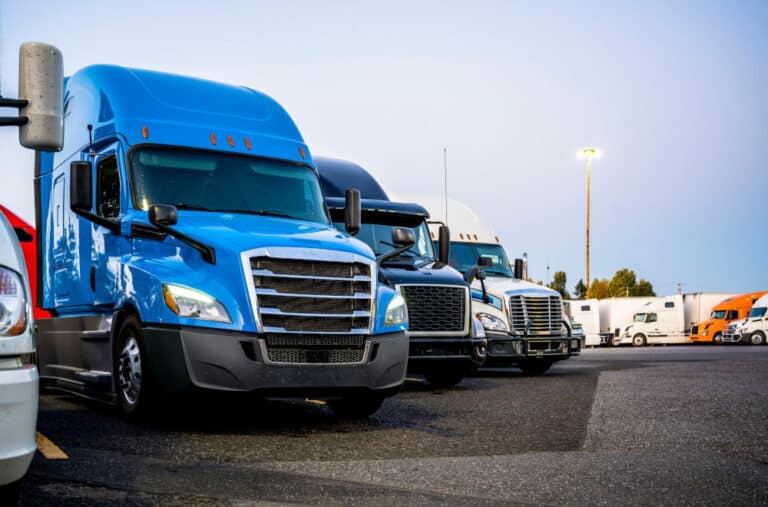Welcome to 2024, a pivotal year for diesel truck drivers in California navigating the complexities of California Air Resources Board (CARB) compliance. This guide follows the intricacies of the Heavy-Duty Inspection and Maintenance (HD I/M) program, a key initiative from CARB, and other regulations that seek to enforce stringent emission standards. Understanding these regulations is crucial for ensuring compliance and contributing to a healthier environment.
Understanding CARB's HD I/M Program
CARB's Role in Environmental Regulation
The California Air Resources Board (CARB) spearheads the state’s efforts to curb air pollution and safeguard public health. While diesel trucks are not the only source of pollution, they emit a significant amount on their daily travels through the state. CARB’s various programs, including the HD I/M program, are central to their mission of maintaining clean air in California.
HD I/M - An Integral Part of CARB Compliance
The HD I/M program, essential to CARB’s regulatory framework, introduces periodic testing requirements for heavy-duty vehicles in 2024. This testing schedule will replace the former PSIP schedule as this program phases out. Compliance with the HD I/M program is fundamental to meeting CARB’s overall environmental standards.
Navigating the HD I/M Testing Process
Testing Frequency for Diesel Semi Trucks
Beginning in 2025, all heavy-duty vehicles, including typical semi-trucks, are required to undergo HD I/M testing twice per year. This biannual testing ensures consistent monitoring of emissions. For semi-trucks equipped with onboard diagnostics (OBD) systems, which are standard in models with 2013 and newer engines, the testing frequency will increase to four times per year in the third year after the initial implementation of the HD I/M program.
Testing Procedures
For semi-trucks with OBD systems, testing involves scanning the engine’s OBD data using a CARB-validated device. This process checks for emission-related faults and ensures the proper functioning of the vehicle’s emission control system. For older semi-trucks without OBD, the testing includes the PSIP-era smoke opacity test and a visual inspection of the vehicle’s emissions control equipment. This smoke opacity test aligns with the SAE J1667 snap acceleration smoke inspection method.
OBD Testing Time Frame
Compliance testing deadlines relate to the vehicle’s DMV registration renewal date. For 2024, a vehicle owner can submit CARB compliance testing results up to 90 days before the renewal date but no later than that date. Beginning in 2025, secondary test results will be automatically uploaded to CARB 90 days before the six-month anniversary of the renewal date but no later than the anniversary. Because the implementation of this testing schedule does not begin until later in 2024, trucks only require a single test next year. Beginning in 2025, the testing will occur twice a year.
Responsibilities Under the HD I/M Program
Who Is Affected by These CARB Regulations?
Nearly all heavy-duty trucks, buses, and vehicles with a gross weight of more than 14,000 pounds operating in California must comply with the CARB regulations. Unlike previous environmental regulations like PSIP, the HD I/M program applies to individual vehicles and not just multi-vehicle fleets.
Diesel Truck Driver and Fleet Owner Responsibilities
Beginning in 2023, every vehicle owner was required to create an owner account in the CARB Clean Truck Check database. This step includes identifying every vehicle in a fleet and paying its compliance fee of $30 per truck to CARB. If a truck driver has previously registered their vehicle in the TRUCRS database, it should have been reregistered in the Clean Truck Check database by December 31, 2023. Failure to register a vehicle may result in a non-compliance citation or blocked DMV registration.
Once a vehicle has been registered with CARB, the next step is to keep it well-maintained, performing all regularly scheduled maintenance tasks. CARB will be on the lookout for high-emitting vehicles, so preventive maintenance will be a critical strategy for avoiding non-compliance penalties.

Out-of-State Fleet Responsibilities
CARB regulations apply to any vehicle that operates in the state of California no matter the state in which it is registered. Interstate trucking companies must be aware that, to conduct business in California, their trucks must also be registered with CARB and undergo regular OBD testing. Thankfully, CARB allows testing to be performed out of state so long as the tester is credentialed as a Clean Truck Check Tester by completing an online program through CARB.
Handling Older Vehicles Under HD I/M
The regulations for older vehicles relate to the age of the engine. According to CARB standards, engines built in 2010 and newer are fully compliant with the regulations and most are equipped with OBD testing capability. CARB has been requiring upgrades of older engine models for several years. If a driver wants to operate a heavy-duty vehicle in California, they must upgrade their engine to a 2010 or newer engine model year.
Trucks with pre-2010 engine model years may qualify for a low-use exemption. However, this choice will severely limit their functionality as they will have a mileage limit of no more than 1,000 miles per year in California.
Inspection and Enforcement in the HD I/M Era

Where Inspections Occur
CARB is actively seeking to identify high-emitting vehicles and have their owners address any pollution issues or take their vehicles off the road. In 2022, CARB introduced new Roadside Emissions Monitoring Devices (REMD) that can flag vehicles suspected of high emissions. While these devices will be found at strategic locations such as state border crossings, they can identify potential high-emitting vehicles at many other locations. Truck drivers must be aware that every trip in their vehicle could involve a random emissions test.
Dealing with a Notice to Submit to Testing (NST)
If an REMD detects potential high emissions from your vehicle, you will receive a Notice to Submit to Testing (NST) from CARB. After receiving the notice, you will have 30 days in which to submit a passing emissions test. This task requires finding an approved Clean Truck Check tester to carry out OBD testing. Older model engines may require smoke opacity testing, though these are being phased out through the HD I/M program.
You must respond to any notice you receive from CARB promptly. Failing to submit proof of CARB compliance may mean dealing with penalties or lost income from a blocked registration. While receiving an NST may be stressful and inconvenient, you can reestablish CARB compliance by following a few steps.
- Understand the Citation: Carefully read the citation to understand the specific violation and associated requirements.
- Resolve the Issue: Address the issue as soon as possible. This may involve repairing your vehicle, retrofitting it with the necessary emissions control equipment, or updating your testing records.
- Submit Proof of Compliance: After resolving the issue, submit the necessary proof of compliance to CARB as instructed in the citation.
- Seek Advice if Needed: If you’re unsure about the process or need guidance, consider reaching out to CARB directly for clarification or contact the experts at Be CARB Compliant to help you through the process.
Avoiding Citations
Staying proactive in maintaining your vehicle’s compliance with the HD I/M program is the best way to avoid citations in the first place. Regular maintenance checks, preventative service, and adherence to testing schedules can significantly reduce the risk of triggering an NST and its follow-up requirements.
Penalties for CARB Non-Compliance
While CARB does not want to prevent people from a livelihood as truck drivers, the goal of CARB penalties is to remove the financial benefits of non-compliance. For individual truck drivers, this can mean blocking their registration and keeping them off the road until they resolve the issue. For trucking companies and other businesses that knowingly stay out of compliance, it can result in significant fines.
Staying Informed and Prepared
CARB regulations and programs continue to evolve, so it is critical for professionals who use diesel equipment to stay informed. You don’t want compliance issues to take you by surprise. Drivers and fleet owners can receive automatic email updates on HD I/M programs by signing up for notifications from CARB.
General information about current CARB regulations can be found on The Truck Stop page on the CARB website as well as the designated Clean Truck Check page.
A Partner for 2024 CARB Compliance
The introduction of the HD I/M program in 2024 marks a significant step in California’s environmental efforts. Truck drivers play a vital role in this initiative, and staying informed and compliant is key to contributing to a greener state. If you have questions about keeping your truck in compliance, responding to an NST, or simply need OBD testing services, the experts at Be CARB Compliant are happy to help. Contact us today to keep your truck in CARB compliance.





5 Responses
Are there aloyt to this. I’m trying to buy used 20- 26 ft box truck. What is the oldest year to purchase to be compliant.
All trucks 14,001 GVWR now have to be in the Clean Truck Check System. A yearly fee paid to the state and testing requirements. A 2010 and newer motor has less restrictions but not much. We always encourage clients to call us before they buy a truck. We can give them some options , then they can decide if they want to proceed.
Are there allot to this. I’m trying to buy used 20- 26 ft box truck. What is the oldest year to purchase to be compliant.
Housecars/RV’s are exempt correct?
Is there a single trip permit, where a noncompliant truck, registered in another state can come in and leave in a short time period?